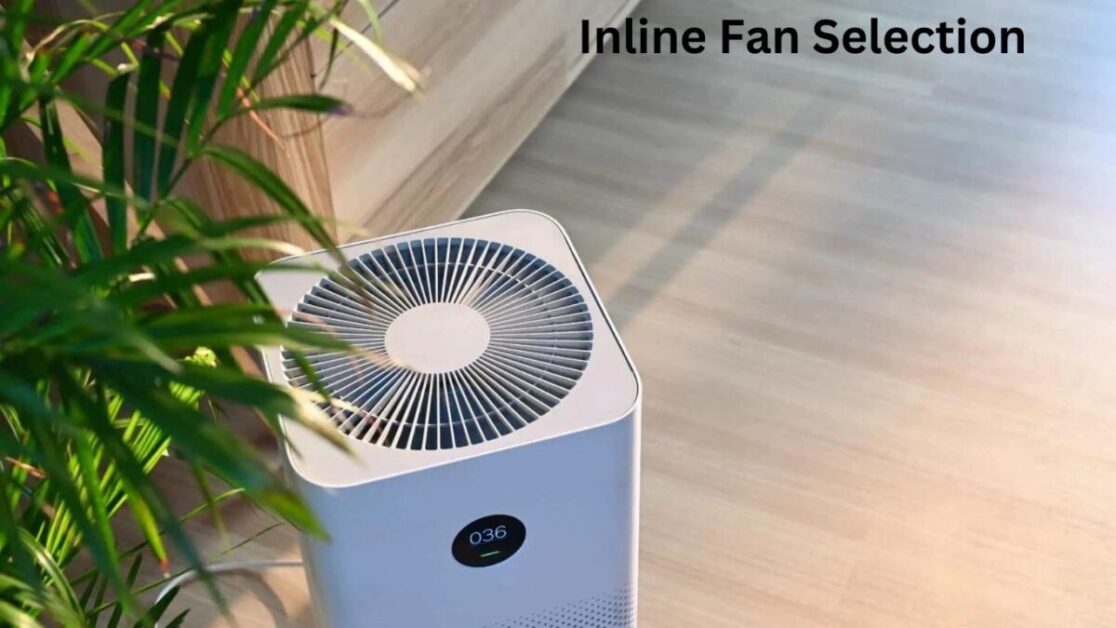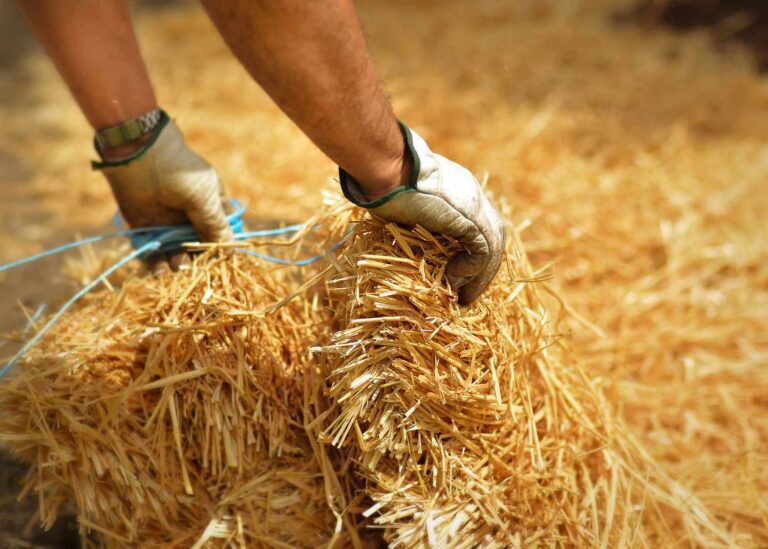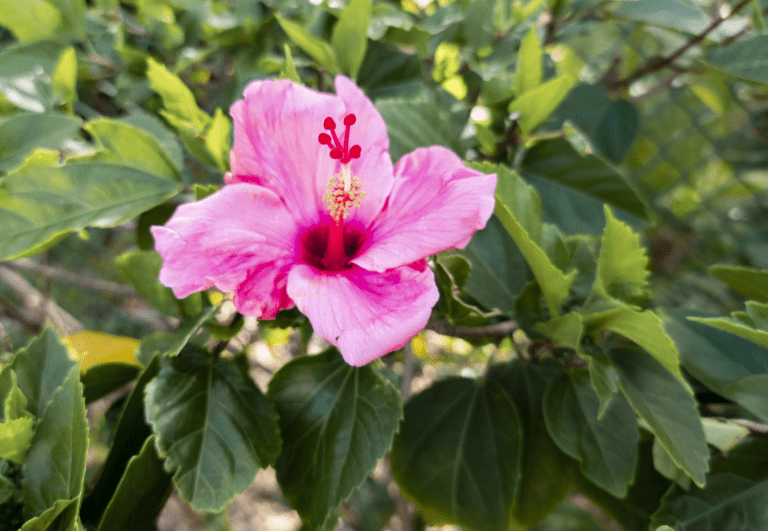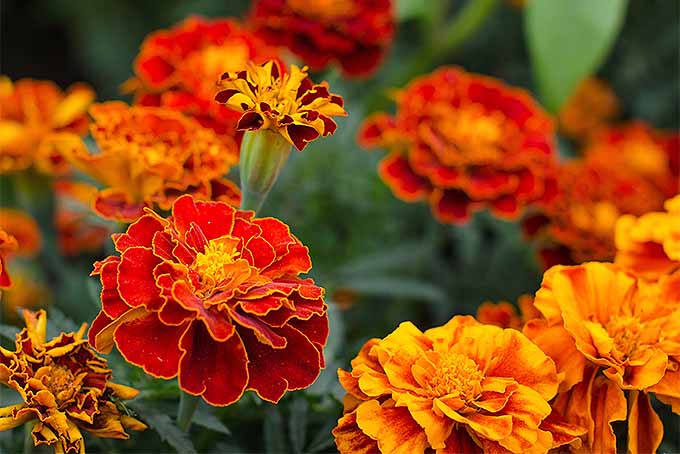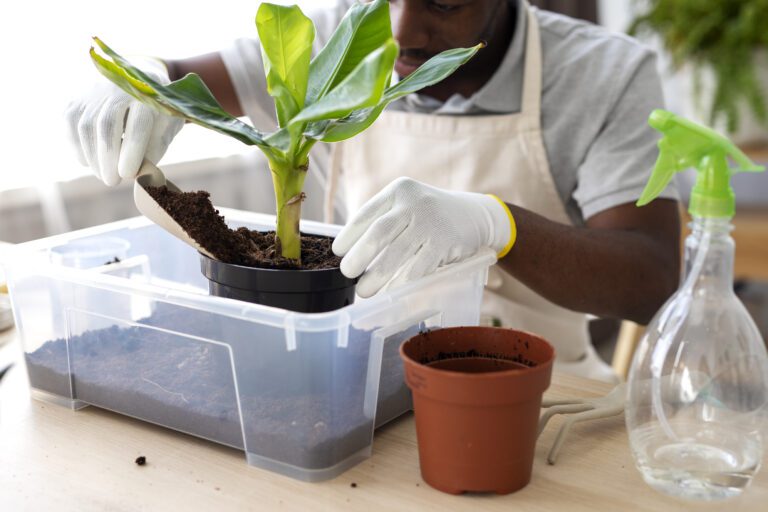Inline Fan Selection: How to Pick Model for Your Grow Room
Table of Contents
Factors to Consider Before Choosing an Inline Fan for Your Grow Room
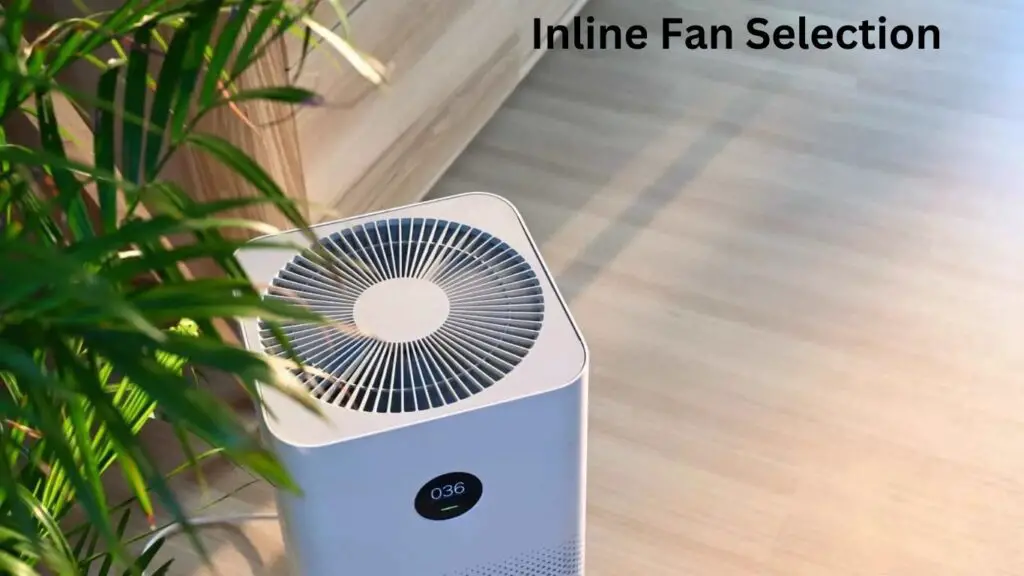
Choosing the right inline fan for your grow room is crucial for creating an optimal environment for your plants. However, with so many options available in the market, it can be overwhelming to make the right choice. Here are some factors to consider before selecting an inline fan for your grow room:
1. Grow room size: One of the first things you need to consider is the size of your grow room. The fan you choose should have the capacity to adequately circulate air throughout the entire space. A fan that is too small may not provide sufficient air exchange, leading to stagnant air and potential problems like mold or pests. On the other hand, a fan that is too large may create excessive air movement, which can stress your plants.
2. CFM requirement: CFM, or cubic feet per minute, is a measurement of the amount of air a fan can move in a minute. Calculating the required CFM for your grow room is essential to ensure proper ventilation. Factors like the number of plants, their stage of growth, and the heat output from other equipment in the room should be considered when determining the CFM requirement. This will help you choose a fan that can effectively remove stale air and bring in fresh air, maintaining optimal conditions for plant growth.
By considering these factors, you can make an informed decision when selecting an inline fan for your grow room.
• Grow room size: The fan should be able to adequately circulate air throughout the entire space.
• CFM requirement: Calculate the required CFM based on factors like number of plants, their growth stage, and heat output from other equipment.
• Air exchange: Ensure that the fan can effectively remove stale air and bring in fresh air for optimal plant growth.
• Noise level: Consider the noise level of the fan as excessive noise can disrupt plant growth and cause stress.
• Energy efficiency: Look for fans that are energy efficient to minimize electricity consumption and reduce costs.
• Durability: Choose a fan that is durable and built to last in order to avoid frequent replacements or repairs.
Determining the Appropriate Fan Size for Your Grow Room
To determine the appropriate fan size for your grow room, there are several key factors to consider. The size of your grow room and the number of plants you have will heavily influence the required fan size. In general, larger grow rooms or rooms with more plants will require a higher CFM (Cubic Feet per Minute) rating for optimal airflow. Additionally, the type of plants you are growing and their specific ventilation needs should be taken into account.
One important measurement to consider when determining fan size is the “air exchange rate.” This refers to the number of times the entire volume of air in your grow room is replaced in one minute. It is recommended to have an air exchange rate of 4-6 times per minute for most indoor gardens. To calculate the required CFM for your grow room, multiply the volume of your grow room (length x width x height) by the desired air exchange rate. This will give you a rough estimate of the minimum CFM rating needed for your fan.
In addition to size and air exchange rate, it is also important to consider the specific environmental factors in your grow room. Factors such as temperature, humidity, and CO2 levels can greatly impact the health and growth of your plants. A properly sized fan will help regulate these factors and maintain a balanced and beneficial environment for your plants.
Ultimately, determining the appropriate fan size for your grow room requires careful consideration of various factors. By taking into account the size of your grow room, the number of plants, the air exchange rate, and other environmental factors, you will be able to select a fan that will provide optimal airflow and ventilation for your plants’ needs.
• The size of your grow room and the number of plants heavily influence the required fan size.
• Larger grow rooms or rooms with more plants will require a higher CFM rating for optimal airflow.
• Consider the type of plants you are growing and their specific ventilation needs.
• Calculate the air exchange rate by multiplying the volume of your grow room by the desired rate (4-6 times per minute).
• Take into account environmental factors such as temperature, humidity, and CO2 levels.
• A properly sized fan helps regulate these factors and maintain a balanced environment for plant growth.
Calculating the Required CFM (Cubic Feet per Minute) for Your Grow Room
Calculating the required CFM (Cubic Feet per Minute) for your grow room is a crucial step in ensuring optimal airflow and ventilation. The CFM measures the amount of air that needs to be exchanged within a given space, and it depends on several factors specific to your grow room setup.
One of the key considerations in determining the required CFM is the size of your grow room. A larger space will require a higher CFM to ensure adequate air circulation. Additionally, the number and size of plants in your grow room will also impact the CFM requirements. Plants release moisture and gases, and a higher plant density will necessitate greater air exchange.
To calculate the required CFM, you can use a simple formula. First, determine the volume of your grow room by multiplying its width, length, and height. For example, if your grow room is 10 feet wide, 12 feet long, and 8 feet high, the volume would be 960 cubic feet (10 x 12 x 8). Next, consider the recommended air exchange rate for your specific plants. This can vary depending on the type of plants and their growth stage. As a general guideline, some experts suggest a minimum of 1 CFM per square foot of grow room space. Multiplying this rate by the volume of your grow room will give you the required CFM. However, it’s important to note that this is a basic calculation, and other factors such as temperature, humidity, and the use of additional equipment should also be taken into account for a more accurate estimation.
• The size of your grow room is a key factor in determining the required CFM.
• The number and size of plants in your grow room also impact the CFM requirements.
• Calculate the volume of your grow room by multiplying its width, length, and height.
• Consider the recommended air exchange rate for your specific plants.
• Some experts suggest a minimum of 1 CFM per square foot of grow room space.
• Multiply this rate by the volume of your grow room to determine the required CFM.
• Other factors such as temperature, humidity, and additional equipment should be considered for a more accurate estimation.
Considering the Noise Level of Inline Fans for Your Grow Room
Noise level is an important factor to consider when choosing an inline fan for your grow room. The noise produced by the fan can be disruptive and uncomfortable, not only for you but also for the plants. Excessive noise can potentially stress the plants and hinder their growth and development.
To assess the noise level of inline fans, you should look for information on the decibel (dB) rating. The decibel scale measures the intensity of sound. The lower the dB rating, the quieter the fan will be. Ideally, you should aim for an inline fan with a low dB rating to minimize any disturbance.
It’s worth noting that different models and brands of inline fans can vary in terms of noise level. It’s a good idea to check product specifications and reviews to gain insight into the noise level experienced by other growers. Additionally, there are certain features that can help reduce noise, such as insulated housing and vibration dampening technology. Taking these factors into consideration will ensure a more pleasant and peaceful environment within your grow room.
• Noise level is an important factor to consider when choosing an inline fan for your grow room.
• Excessive noise can potentially stress the plants and hinder their growth and development.
• The decibel (dB) rating is used to assess the noise level of inline fans.
• The lower the dB rating, the quieter the fan will be.
• It’s a good idea to check product specifications and reviews to gain insight into the noise level experienced by other growers.
• Different models and brands of inline fans can vary in terms of noise level.
• Features such as insulated housing and vibration dampening technology can help reduce noise.
Exploring the Different Types of Inline Fans Available in the Market
When it comes to selecting an inline fan for your grow room, it’s essential to explore the different types available in the market. Understanding the options will help you make an informed decision and ensure that you choose the right fan for your specific needs.
One type of inline fan is the centrifugal fan, which uses centrifugal force to propel air. These fans are highly efficient and have a high static pressure capability, making them ideal for setups with long ducting runs or those that require air to be pushed through filters or cooling systems. Another type is the axial fan, which operates by moving air parallel to the fan blades. Axial fans are best suited for applications that require high airflow rates but may not require high static pressure, such as air circulation in small to medium-sized grow rooms. Additionally, mixed flow fans combine the characteristics of both centrifugal and axial fans, offering a balance between airflow and static pressure. These fans are versatile and suitable for various grow room setups.
By exploring the different types of inline fans available in the market, you can identify the fan that aligns with your grow room requirements. Whether you prioritize high static pressure, maximum airflow, or a balance of both, understanding the features and capabilities of each type will help you make a well-informed decision for optimal ventilation in your grow room.
• Centrifugal fans use centrifugal force to propel air and are highly efficient with high static pressure capability.
• Axial fans move air parallel to the fan blades, making them ideal for applications that require high airflow rates but not necessarily high static pressure.
• Mixed flow fans combine characteristics of both centrifugal and axial fans, offering a balance between airflow and static pressure.
• Understanding the features and capabilities of each type of inline fan will help you choose the right one for your specific grow room requirements.
Comparing the Pros and Cons of Inline Fans with Other Ventilation Options
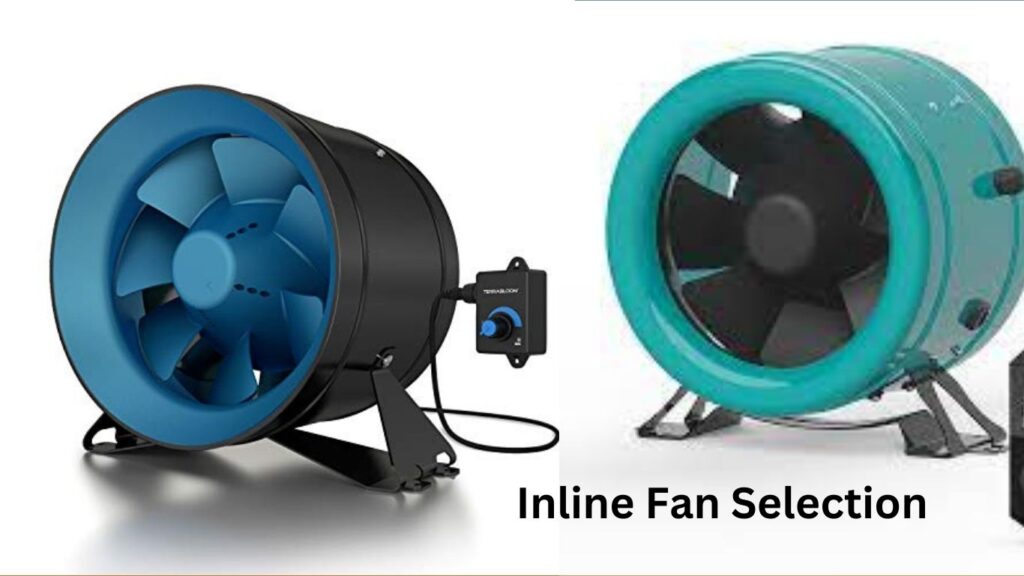
Inline fans are a popular choice for ventilation in grow rooms due to their effectiveness and efficiency. However, it is important to compare them with other ventilation options to make an informed decision. One alternative to inline fans is oscillating fans, which are commonly used to promote air circulation. While oscillating fans are relatively inexpensive and easy to install, they may not provide adequate ventilation in larger grow rooms. Inline fans, on the other hand, are specifically designed for efficient air exchange and can effectively remove heat and humidity from the grow room. They have higher CFM (Cubic Feet per Minute) ratings, allowing them to move larger volumes of air. Additionally, inline fans can be connected to carbon filters to effectively remove odors from the grow room. However, it is important to consider the noise level of inline fans, as they can generate significant noise compared to oscillating fans. Noise can be a concern, especially in residential areas or if the grow room is in close proximity to living spaces or bedrooms. In such cases, additional soundproofing measures may be needed to mitigate the noise. Overall, both inline fans and oscillating fans have their pros and cons, and the choice depends on the specific needs and considerations of the grow room setup.
• Inline fans are effective and efficient for ventilation in grow rooms
• Oscillating fans are inexpensive and easy to install, but may not provide adequate ventilation in larger grow rooms
• Inline fans are specifically designed for efficient air exchange and can effectively remove heat and humidity from the grow room
• Inline fans have higher CFM ratings, allowing them to move larger volumes of air
• Inline fans can be connected to carbon filters to effectively remove odors from the grow room
• Noise level is a concern with inline fans compared to oscillating fans
• Additional soundproofing measures may be needed for inline fan setups in residential areas or close proximity to living spaces or bedrooms
Overall, the choice between inline fans and oscillating fans depends on factors such as size of the grow room, need for odor control, noise considerations, and specific requirements of the setup.
Assessing the Power Efficiency of Inline Fans for Your Grow Room
Inline fans play a crucial role in maintaining the optimal environment for your grow room, and assessing their power efficiency is an important factor to consider. Power efficiency refers to how effectively an inline fan converts electrical energy into mechanical energy to move air. A higher power efficiency means the fan consumes less electricity while providing the desired air circulation.
When assessing the power efficiency of inline fans for your grow room, it is vital to consider the fan’s wattage and airflow rating. The wattage indicates the amount of power the fan consumes, with lower wattage fans being more energy-efficient. Furthermore, the airflow rating, measured in cubic feet per minute (CFM), determines the fan’s ability to move air. It is essential to strike a balance between power consumption and airflow, ensuring the inline fan efficiently circulates air without excessive energy usage. By selecting a power-efficient inline fan, you not only save on electricity costs but also contribute to a more sustainable and environmentally friendly grow room setup.
• Power efficiency refers to how effectively an inline fan converts electrical energy into mechanical energy to move air.
• Higher power efficiency means the fan consumes less electricity while providing the desired air circulation.
• Wattage indicates the amount of power the fan consumes, with lower wattage fans being more energy-efficient.
• Airflow rating, measured in cubic feet per minute (CFM), determines the fan’s ability to move air.
• Striking a balance between power consumption and airflow ensures efficient circulation without excessive energy usage.
• Selecting a power-efficient inline fan saves on electricity costs and contributes to a sustainable grow room setup.
Understanding the Importance of Air Exchange in Your Grow Room
Air exchange is a crucial factor to consider when optimizing the environment in your grow room. Proper air exchange ensures a continuous supply of fresh air and the removal of stale air, creating an ideal atmosphere for healthy plant growth. Without adequate air exchange, the accumulation of carbon dioxide, ethylene, and other gases produced by plants can inhibit their growth and lead to various issues like mold and pests.
One of the key benefits of air exchange is the regulation of temperature and humidity levels. As plants transpire and release moisture into the air, humidity can quickly build up in an enclosed grow room. High humidity levels can create a breeding ground for mold, mildew, and other harmful pathogens. By introducing fresh air and exhausting stale air, air exchange helps to maintain optimal humidity levels, preventing the growth of these detrimental organisms. Similarly, air exchange assists in regulating temperature, preventing hot spots and ensuring an even distribution of heat throughout the grow room. With the right balance of temperature and humidity, plants can thrive and achieve their maximum growth potential.
• Proper air exchange ensures a continuous supply of fresh air and removal of stale air
• Accumulation of gases like carbon dioxide and ethylene can inhibit plant growth without adequate air exchange
• Lack of air exchange can lead to issues like mold and pests in the grow room
• Air exchange helps regulate temperature and humidity levels in the grow room
• High humidity levels can create a breeding ground for harmful pathogens like mold and mildew
• Air exchange prevents hot spots and ensures even distribution of heat throughout the grow room
• With optimal temperature and humidity, plants can thrive and reach their maximum growth potential.
Considering the Available Space for Installing the Inline Fan in Your Grow Room
When considering the available space for installing an inline fan in your grow room, it is essential to take into account both the physical dimensions and the layout of the space. Inline fans are typically installed in the ventilation system to ensure proper air circulation and control the temperature and humidity levels. Therefore, it is crucial to choose a fan that can fit comfortably within the designated area without causing any obstructions or hindering the movement of plants or equipment.
Before making a decision, measure the available space accurately and take note of any existing fixtures or obstacles that may affect the installation. Consider factors such as the height, width, and depth of the area where the inline fan will be placed. Additionally, evaluate the distance and accessibility to power sources and ducting connections. By carefully assessing the available space, you can choose an inline fan that not only fits seamlessly into your grow room but also maximizes its efficiency and effectiveness in maintaining an optimal environment for your plants.
• Measure the available space accurately, considering height, width, and depth
• Take note of any existing fixtures or obstacles that may affect installation
• Evaluate distance and accessibility to power sources and ducting connections
• Choose an inline fan that fits seamlessly into your grow room
• Ensure the fan does not obstruct movement of plants or equipment
• Maximize efficiency and effectiveness in maintaining optimal environment for plants
Exploring the Different Mounting Options for Inline Fans in Your Grow Room
When it comes to installing inline fans in your grow room, there are several mounting options to consider. The choice of mounting option depends on the layout and design of your grow room, as well as your specific needs and preferences. One common mounting option is to install the inline fan directly onto a ceiling or wall using mounting brackets. This allows for efficient airflow distribution and saves space within the grow room. Another mounting option is to suspend the inline fan from the ceiling or hang it from a support system using chains or ropes. This method provides flexibility in adjusting the height and position of the fan, enabling you to optimize air circulation according to the plants’ growth stages. Alternatively, you can also mount the inline fan on a platform or shelf, which can be particularly useful if you have limited wall or ceiling space available. This method ensures stability and easy access for maintenance and cleaning purposes. Overall, the choice of mounting option should be based on the specific requirements of your grow room and the layout that best supports optimal airflow and ventilation.
Different Mounting Options for Inline Fans:
1. Directly mounted onto a ceiling or wall using mounting brackets for efficient airflow distribution and space-saving.
2. Suspended from the ceiling or hung from a support system using chains or ropes for adjustable height and position.
3. Mounted on a platform or shelf for stability and easy maintenance access.
Different Mounting Options for Inline Fans:
• Directly mounted onto a ceiling or wall using mounting brackets for efficient airflow distribution and space-saving.
• Suspended from the ceiling or hung from a support system using chains or ropes for adjustable height and position.
• Mounted on a platform or shelf for stability and easy maintenance access.
Understanding the Role of Ducting in Inline Fan Systems for Grow Rooms
Ducting plays a crucial role in the functionality and efficiency of inline fan systems for grow rooms. It serves as the conduit through which air is moved in and out of the room, ensuring a proper and consistent airflow. By connecting the inline fan to the ducting, growers can effectively control the direction and volume of air circulation in their grow rooms.
The primary purpose of ducting in an inline fan system is to transport fresh, filtered air from outside the grow room to the plants. This air exchange is essential for maintaining optimal conditions, including temperature, humidity, and CO2 levels, which are crucial for healthy plant growth. Additionally, ducting helps remove stale air, excess heat, and odors produced in the grow room, promoting a clean and odor-free environment.
To maximize the efficiency of the inline fan system, it is important to consider the type and quality of ducting material. Proper insulation, airtight connections, and the absence of leaks or obstructions are factors that contribute to an effective airflow. Additionally, choosing the appropriate diameter and length of ducting for the size and layout of the grow room ensures the smooth and efficient movement of air. A well-designed ducting system can significantly enhance the performance of the inline fan and contribute to the overall success of the grow room.
• Ducting serves as the conduit for air movement in and out of grow rooms
• It allows growers to control the direction and volume of airflow
• Fresh, filtered air is transported from outside the grow room to maintain optimal conditions for plant growth
• Ducting helps remove stale air, excess heat, and odors from the grow room
• Proper insulation, airtight connections, and absence of leaks or obstructions contribute to effective airflow
• Choosing the appropriate diameter and length of ducting enhances efficiency
• A well-designed ducting system enhances overall performance of inline fan systems
Choosing the Right Ducting Material for Your Inline Fan System
When selecting the right ducting material for your inline fan system, there are several factors to consider. The primary considerations are the air flow requirements, the durability of the material, and the ease of installation and maintenance.
First and foremost, it is crucial to choose a ducting material that can handle the air flow requirements of your inline fan system. The material should be able to effectively move the air from the fan to the desired location in your grow room without causing excessive resistance or pressure loss. This will ensure efficient ventilation and proper air exchange within your growing space.
In addition, the chosen ducting material should be durable and long-lasting. It should be able to withstand the challenging conditions of a grow room, such as high humidity and exposure to various chemicals or fertilizers. Opting for a material that is resistant to corrosion, mold, and mildew will help prevent damage and prolong the lifespan of your inline fan system.
Furthermore, considering the ease of installation and maintenance is important. Select a ducting material that is flexible and easy to work with, allowing for straightforward installation and adjustments. Additionally, choose a material that is easy to clean and maintain, as regular cleaning is essential for optimal air quality and efficient ventilation in your grow room.
Taking into account these factors will lead you to the right ducting material for your inline fan system, ensuring proper air circulation and a healthy growing environment for your plants.
• The ducting material should be able to handle the air flow requirements of your inline fan system without causing excessive resistance or pressure loss.
• Opt for a material that is durable and long-lasting, capable of withstanding high humidity and exposure to chemicals or fertilizers in a grow room.
• Consider a ducting material that is resistant to corrosion, mold, and mildew to prevent damage and prolong the lifespan of your inline fan system.
• Choose a material that is flexible and easy to work with for straightforward installation and adjustments.
• Select a ducting material that is easy to clean and maintain for optimal air quality and efficient ventilation in your grow room.
Considering the Maintenance and Cleaning Requirements of Inline Fans
Maintenance and cleaning are crucial aspects to consider when selecting an inline fan for your grow room. Regular maintenance not only ensures the optimal performance of your fan but also contributes to the overall health and productivity of your plants. One important maintenance task is cleaning the fan blades and housing to remove dust, debris, and any potential contaminants that may hinder proper airflow. This can be done using a soft brush or cloth, taking care to avoid damaging the fan components.
In addition to regular cleaning, it is essential to check and replace any worn-out or damaged parts of the inline fan. This includes inspecting the fan motor, belts, bearings, and wiring for signs of wear and tear. Timely replacements not only prevent potential breakdowns but also prolong the lifespan of your inline fan. It is recommended to refer to the manufacturer’s guidelines for specific maintenance requirements and schedules for your particular fan model. By properly maintaining and cleaning your inline fan, you can ensure its longevity and continue to enjoy efficient ventilation in your grow room.
• Regularly clean the fan blades and housing using a soft brush or cloth
• Avoid damaging the fan components while cleaning
• Check and replace any worn-out or damaged parts of the inline fan
• Inspect the fan motor, belts, bearings, and wiring for signs of wear and tear
• Timely replacements prevent potential breakdowns and prolong the lifespan of your inline fan
• Refer to the manufacturer’s guidelines for specific maintenance requirements and schedules
Exploring the Warranty and After-Sales Support of Inline Fan Manufacturers
When considering a purchase as important as an inline fan for your grow room, it is crucial to explore the warranty and after-sales support provided by the manufacturers. The warranty ensures that you are protected against any manufacturing defects or malfunctions that may occur within a specific period. It gives you peace of mind knowing that if anything goes wrong, you have the option of getting it repaired or replaced without incurring additional costs.
In addition to the warranty, it is equally important to evaluate the after-sales support offered by the manufacturers. This includes the availability of customer service representatives who can assist you with any queries or concerns you may have. A responsive and knowledgeable customer support team can be invaluable when troubleshooting issues or seeking guidance on the optimal use of your inline fan. Furthermore, manufacturers that offer comprehensive after-sales support often provide resources such as instructional guides, online forums, or video tutorials, enabling you to maximize the performance and longevity of your inline fan.
• The warranty provided by inline fan manufacturers protects against manufacturing defects or malfunctions within a specific period.
• Having a warranty gives peace of mind, knowing that any issues can be repaired or replaced without additional costs.
• After-sales support is crucial and should be evaluated when choosing an inline fan manufacturer.
• Customer service representatives should be available to assist with queries or concerns.
• A responsive and knowledgeable customer support team is invaluable for troubleshooting issues and providing guidance on optimal use of the inline fan.
• Manufacturers that offer comprehensive after-sales support often provide resources such as instructional guides, online forums, or video tutorials.
Researching and Reading Customer Reviews of Different Inline Fan Models
When researching and trying to select the best inline fan for your grow room, it is essential to gather information and read customer reviews of different models. Customer reviews provide valuable insights into the performance, durability, and overall satisfaction levels of the inline fan you are considering.
By reading customer reviews, you can learn about the experiences of other growers and gain a better understanding of the pros and cons of a particular inline fan model. These reviews often highlight crucial factors such as noise levels, power efficiency, ease of installation, and maintenance requirements. Additionally, customer reviews can also shed light on the reliability of the manufacturer’s warranty and the promptness of their after-sales support. By taking the time to research and read customer reviews, you can make a more informed decision and choose the inline fan that best suits your specific grow room needs.
• Customer reviews provide valuable insights into the performance, durability, and overall satisfaction levels of different inline fan models.
• Reading customer reviews allows you to learn about the experiences of other growers and understand the pros and cons of a particular inline fan model.
• These reviews often highlight important factors such as noise levels, power efficiency, ease of installation, and maintenance requirements.
• Customer reviews can also shed light on the reliability of the manufacturer’s warranty and after-sales support.
• By researching and reading customer reviews, you can make a more informed decision when selecting an inline fan for your grow room.
Consulting with Experienced Growers or Professionals for Inline Fan Recommendations
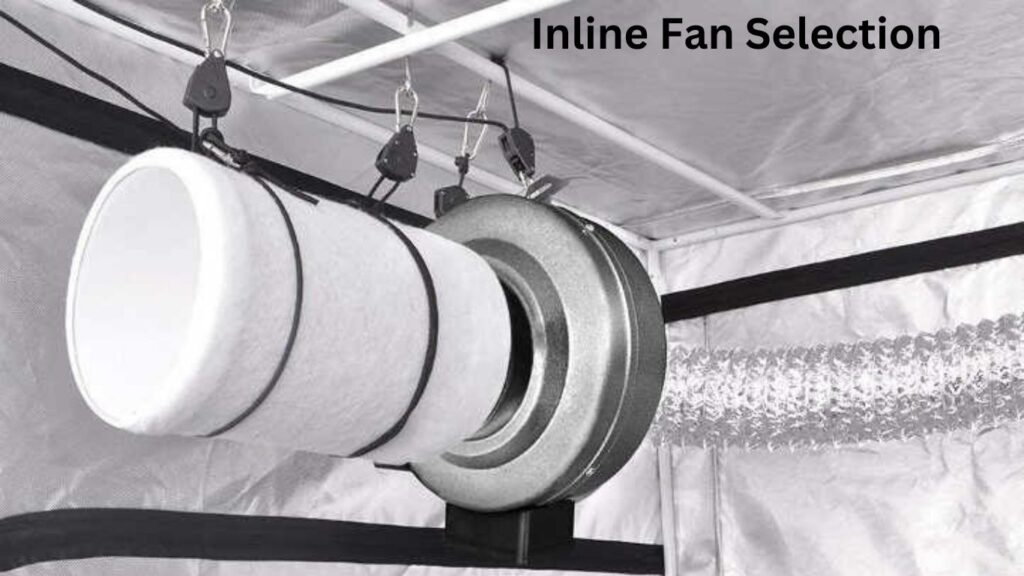
Consulting with experienced growers or professionals is a valuable step in selecting the ideal inline fan for your grow room. These individuals have hands-on experience and deep knowledge of the specific challenges and requirements of indoor gardening. By seeking their recommendations, you can tap into their expertise, benefiting from their insights and real-world experiences.
Experienced growers and professionals can provide valuable advice on various aspects of inline fans, including performance, reliability, noise levels, and energy efficiency. They can share their firsthand experiences with different models and brands, shedding light on the pros and cons of each option. Furthermore, they can provide specific recommendations based on the size of your grow room, the type of plants you are cultivating, and your specific ventilation needs. Their guidance can help you make an informed decision and avoid potential pitfalls, saving you time, effort, and money in the long run.
• Experienced growers and professionals have hands-on experience and deep knowledge of indoor gardening
• Their recommendations can provide valuable insights and real-world experiences
• They can advise on aspects such as performance, reliability, noise levels, and energy efficiency of inline fans
• Sharing firsthand experiences with different models and brands helps in understanding pros and cons
• Specific recommendations based on grow room size, plant type, and ventilation needs ensure an informed decision
• Consulting with experts helps avoid potential pitfalls
• Saves time, effort, and money in the long run
Here’s a table outlining considerations for selecting an inline fan for a grow room:
Table: Inline Fan Selection for Grow Room
| Consideration | Description |
|---|---|
| Airflow (CFM) | Determine the required Cubic Feet per Minute (CFM) based on the size of your grow room and the number of plants. |
| Static Pressure | Consider the static pressure, which is the resistance the fan has to work against. Ensure the fan can handle your setup’s resistance, including filters and ducts. |
| Noise Level (dB) | Choose a fan with an acceptable noise level for your environment. Look for models designed with noise reduction features. |
| Size and Mounting | Select a fan that fits your available space and is easy to install. Consider whether it will be hung, mounted, or inline. |
| Energy Efficiency | Opt for energy-efficient models to reduce operating costs. Look for fans with high CFM per watt ratings. |
| Controller Compatibility | Check if the fan is compatible with speed controllers or automation systems for better control over airflow and noise. |
| Build Quality and Durability | Invest in a fan with a sturdy construction and durable materials, as it will be running continuously in a grow room. |
| Brand Reputation | Choose a fan from reputable brands known for quality and reliability. Read reviews from other growers for real-world feedback. |
| Temperature and Humidity Rating | Ensure the fan is rated for the temperature and humidity levels expected in your grow room. |
| Ease of Maintenance | Select a fan that is easy to clean and maintain. Consider models with removable blades and accessible housing. |
| Cost and Budget | Compare prices while considering the overall value and features. Keep in mind that a quality fan is a long-term investment. |
Remember, the ideal inline fan for your grow room depends on the specific conditions and requirements of your setup. It’s important to thoroughly research and analyze each factor to make an informed decision.
Final Thoughts: Selecting the Ideal Inline Fan for Opt
Selecting the ideal inline fan for optimal performance in your grow room is crucial for maintaining a healthy and thriving cultivation environment. With the plethora of options available in the market, it can be overwhelming to make the right choice. However, by considering various factors, you can ensure that you invest in a quality inline fan that meets your specific requirements.
One of the primary factors to contemplate is the size of the fan. Determining the appropriate fan size for your grow room is essential for effective air circulation and ventilation. Be sure to assess the dimensions of your grow space and match it with the fan’s capacity. A fan that is too small may result in inadequate air exchange, while an oversized fan could create excessive air movement, potentially damaging your plants. By finding the right balance, you can maintain optimal airflow and provide the necessary fresh air for your plants’ growth.
• Consider the size of your grow room and match it with the fan’s capacity
• Avoid using a fan that is too small, as it may lead to inadequate air exchange
• Be cautious of using an oversized fan, as it could create excessive air movement and potentially harm your plants
• Finding the right balance will ensure optimal airflow and provide necessary fresh air for plant growth
How do I determine the appropriate size for an inline fan for my grow room?
To determine the appropriate size for an inline fan, you need to consider the size of your grow room and the number of plants you have. Calculate the required CFM (Cubic Feet per Minute) based on the recommended air exchange rate for your plants.
What are the different types of inline fans available in the market?
There are various types of inline fans available, including centrifugal fans, mixed-flow fans, and axial fans. Each type has its own advantages and disadvantages, so it’s important to choose the one that suits your specific needs.
How do inline fans compare to other ventilation options?
Inline fans are a popular choice for grow rooms due to their efficiency and effectiveness. They provide better air circulation and can be more power-efficient compared to other ventilation options like oscillating fans or exhaust fans.
What is the role of ducting in inline fan systems for grow rooms?
Ducting is essential in an inline fan system as it helps to channel the airflow properly. It allows you to direct the air where it is needed most in your grow room, ensuring proper ventilation and temperature control.
What is the recommended ducting material for an inline fan system?
The recommended ducting material for an inline fan system is typically flexible aluminum ducting. It is durable, lightweight, and has a smooth interior surface that minimizes airflow resistance.
How often do inline fans need to be maintained and cleaned?
Inline fans should be regularly maintained and cleaned to ensure optimal performance. The frequency of maintenance and cleaning depends on factors such as the environment, the amount of dust or debris present, and the manufacturer’s recommendations.
What should I consider when researching and reading customer reviews of inline fan models?
When researching and reading customer reviews, consider factors such as the overall satisfaction of customers, reliability, noise level, durability, and any potential issues or concerns mentioned by other users.
Is it advisable to consult with experienced growers or professionals for inline fan recommendations?
Yes, consulting with experienced growers or professionals can provide valuable insights and recommendations based on their practical knowledge and experience in using inline fans. They can help you make an informed decision based on your specific grow room requirements.
What should I consider when assessing the warranty and after-sales support of inline fan manufacturers?
When assessing the warranty and after-sales support, consider the length of the warranty, what it covers, and the reputation of the manufacturer for providing reliable customer support. This will ensure that you have assistance in case of any issues with your inline fan.
Can you provide some final thoughts on selecting the ideal inline fan for optimal results in a grow room?
Selecting the ideal inline fan for your grow room requires careful consideration of factors such as fan size, required CFM, noise level, power efficiency, available space, ducting, and maintenance requirements. It is important to research, compare different options, and seek recommendations from professionals to make an informed decision for optimal results in your grow room.

